I don't think what you ask is possible with the official PowerBI REST API. There is no option to add the notification emailaddress in the MS Docs, or an option that is 'daily' withou listing every weekday. Link: https://learn.microsoft.com/en-us/rest/api/power-bi/datasets/update-refresh-schedule#schedulenotifyoption
In this forum post the answer from Microsoft also notes that adding a notification emailaddress is not possible.
https://community.fabric.microsoft.com/t5/Service/power-bi-create-schedule-refresh-api-not-able-to-set-email-ID/m-p/1679990
Best you can now do is the following, which will email the dataset owner:
{
"value": {
"notifyOption": "MailOnFailure",
"enabled": true,
"days": [
"Sunday",
"Monday",
"Tuesday",
"Wednesday",
"Thursday",
"Friday",
"Saturday"
],
"times": [
"07: 00",
"06: 30"
],
"localTimeZoneId": "UTC"
}
}
EDIT
Using the REST API that PowerBI uses from the webportal I have been able to change the refresh settings. Please note, Microsoft might change this API anytime, since it is not desgined for end-users.
First you will need to get an access token. I got mine by copying the first token request from the webportal (caught with browser development tools). When you use an Azure AD application you will easily be able to get a token. Microsoft has a lot of documentation about it. https://learn.microsoft.com/en-us/azure/active-directory/develop/v2-oauth2-auth-code-flow
One setup could be this.
See for details about the app settings in AzureAD: https://stackoverflow.com/a/63989297
$clientId = "YOUR_CLIENT_ID"
$clientSecret = "YOUR_CLIENT_SECRET"
$resource = "openid profile offline_access https://analysis.windows.net/powerbi/api/.default"
$tokenEndpoint = "https://login.microsoftonline.com/common/oauth2/v2.0/token"
$body = @{
"grant_type" = "client_credentials"
"client_id" = $clientId
"client_secret" = $clientSecret
"scope" = $resource
}
$getToken = Invoke-WebRequest -UseBasicParsing -Uri "https://login.microsoftonline.com/common/oauth2/v2.0/token" -Method Post -Body $body -ContentType "application/x-www-form-urlencoded"
$bearer = "Bearer $(($getToken.Content | ConvertFrom-Json).access_token)"
When you have your bearer token you can start using the API. I have caught these endpoints using my browser. My base URI references north-europe. It might be different for you. When changing the refresh settings in the webportal you will see a request 'rehreshschedule', you can use details there to fill your automation script.
First we get the dataset:
# dataset details (example)
$workspaceName = "My Workspace"
$displayname = "Deployments"
$getdatasets = Invoke-WebRequest -UseBasicParsing -Uri "https://wabi-north-europe-k-primary-redirect.analysis.windows.net/metadata/gallery/SharedDatasets" -Headers @{ "authorization"= $bearer }
$datasets = ($getdatasets.Content | ConvertFrom-Json -AsHashtable)
$workspace = $datasets | Where-Object {$_.workspaceName -eq "$workspacename"}
$dataset = $workspace | Where-Object {$_.model.displayName -eq "$displayName"}
$modelId = $dataset.modelId
Then we create the body for the refreshschedule request. I suggest following the details you catch once from the portal. Refresh body options:
refresh
- NotificationEnabled > true/false if true then the dataset owner is
notified.
- refreshContacts > if filled properly, then these contacts
are notified.
- objectId/UPN/DisplayName/emailAddress > the AzureAD/M365 details of the account to send the notification to.
There are multiple ways to get this, i.e. AzureAD or MS Graph powershell modules. Or you can copy this once using the developers tools in you browser when making the refresh settings for the needed account. These identifiers and Types will stay the same. By copying you will get all the right values for objectType, groupType etc, if you do not use a regular user.
$body = @{
importAndRefreshBehavior = 2
refreshEnabled = $true
isDaily = $true
refreshFrequency = $null
weekDays = 127
executionTime = $null
executionTimeHourly = "[`"7:00:00`",`"6:30:00`"]"
localTimeZoneId = "China Standard Time" # replace with local timezone
refreshNotificationEnabled = $false
refreshContacts = @(
@{
displayName = "User Name"
objectId = "657b56e4-c6c5-42e9-80e7-745180df3aeb"
userPrincipalName = "user.name@domain.com"
isSecurityGroup = $false
objectType = 1
groupType = 0
aadAppId = $null
emailAddress = "user.name@domain.com"
relevanceScore = $null
creatorObjectId = $nul
}
)
} | ConvertTo-Json
Lastly we actually send the request.
$uri = "https://wabi-north-europe-k-primary-redirect.analysis.windows.net/powerbi/metadata/models/$modelId/refreshschedule"
$refresh = Invoke-WebRequest -UseBasicParsing -Uri $uri -Method "POST" -Headers @{"authorization" = $bearer} -ContentType "application/json;charset=UTF-8" -Body $body
As for the requirement from your management.
The reason why we must implement it using the REST API is that in our
Prod environment, we are not allowed to manually modify it, which is
considered an unsafe behavior, and the company does not allow manual
modification of the prod environment.
Using such a backend API is not safe either, since Microsoft is not at all required (and doesn't) inform users of change in backend APIs.
I hope this will help you get further on this project :).
